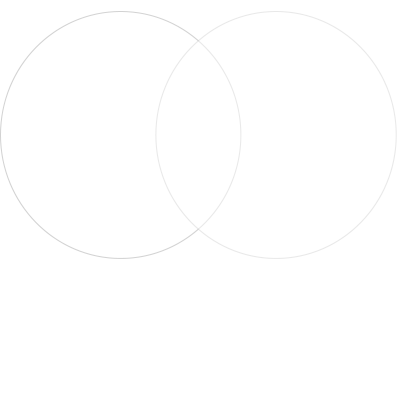
A liquid crystal display screen, also known as a TFT-LCD, consists of three layers - two glass substrates with a layer of liquid crystal in between: the upper glass substrate is attached to a color filter and the lower glass substrate is embedded with thin film transistors.
The working principle of a liquid crystal display screen is as follows: when current passes through the transistors on the lower glass substrate, an electric field change is produced, causing the liquid crystal molecules to deflect and thus change the polarization of light. The polarization of light is then determined using a polarizing plate, which in turn decides the brightness or darkness of each pixel. In addition, because the upper glass substrate is attached to the color filter, each pixel contains red, green and blue colors. These pixels emitting red, green and blue colors form the video image displayed on the panel. The area occupied by each individual pixel is determined by the thin film transistor (TFT) on the lower layer, which also determines the resolution and maximum brightness of the liquid crystal display screen. Since the electron transfer is caused by the transistors, the electron transfer rate of the lower transistors also determines the power consumption of the entire liquid crystal display screen. The higher the electron transfer rate, the lower the power consumption.
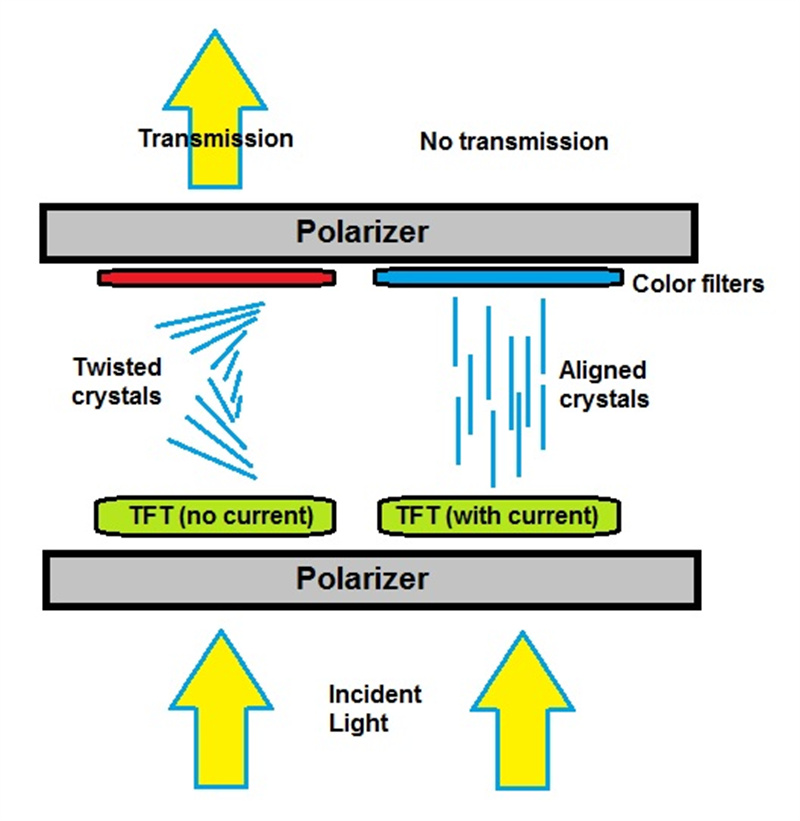
At present, there are three main thin-film transistor technologies used in LCD screens: Alpha-Si (a-Si, amorphous silicon), IGZO (indium gallium zinc oxide), and LTPS (low temperature polysilicon).
a-Si IGZO LTPS Technical Features
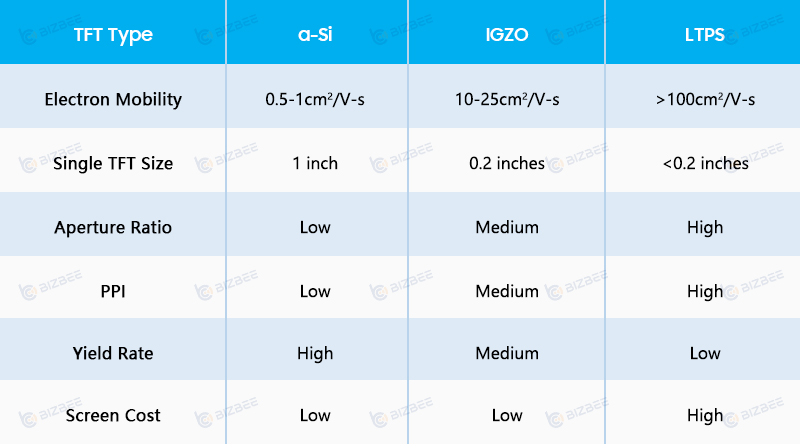
Early TFT-LCDs used a-Si as the substrate material, which is a type of amorphous silicon technology and currently the most widely used technology due to its simplicity and low cost. However, the large pixel area occupied by the switch itself results in a low aperture ratio, which makes it difficult to achieve high brightness, and the PPI can only reach a relatively low level. As consumer demand for display products gradually increases, mobile terminals such as smartphones and tablets are moving towards higher resolution, more saturated colors, and thinner form factors. It is clear that a-Si technology is no longer able to meet the requirements of the latest display technology, leading to the development of IGZO and LTPS technology.
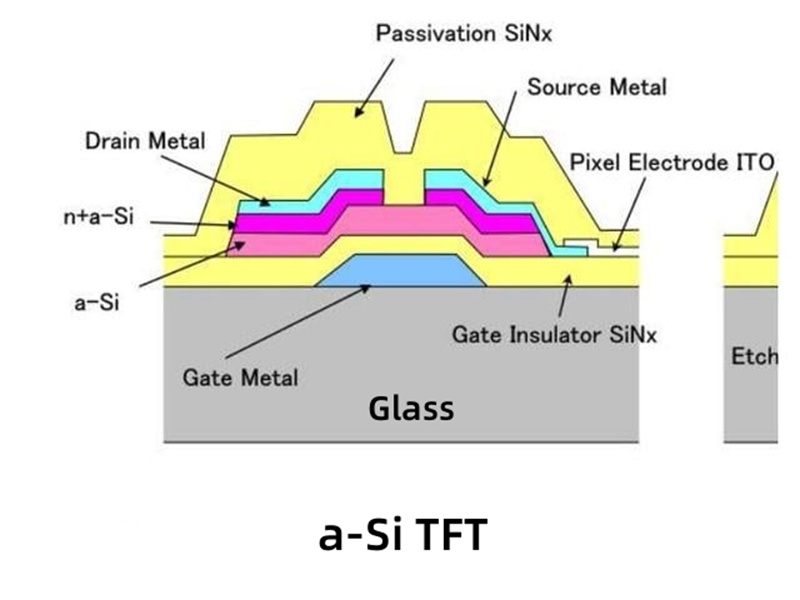
IGZO stands for Indium Gallium Zinc Oxide, which is a channel material used in new generation thin film transistor technology as a type of metal oxide panel technology. The amorphous IGZO material has advantages of high mobility, good uniformity, transparency, and simple fabrication process. Compared to a-Si, IGZO has better stability under light exposure and has strong flexibility, making it suitable for flexible displays. However, IGZO also has some disadvantages such as a relatively short lifespan, and is sensitive to water, oxygen, and other factors, which can lead to decreased reliability and stability after prolonged use. Therefore, a protective layer is needed, which slows down the mass production process.
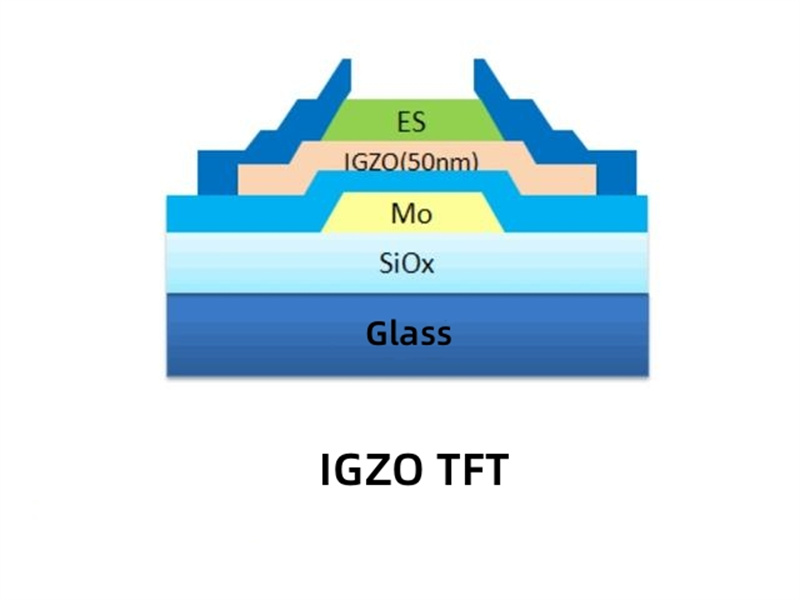
Due to the issues associated with the aforementioned technologies, high-end devices are increasingly adopting the Low Temperature Poly-Silicon (LTPS) technology. LTPS is a type of crystalline silicon technology formed by irradiating amorphous silicon with laser light to induce energy level transitions and transform it into a polycrystalline structure. Compared to the other two technologies, LTPS has a higher electron mobility, which results in higher resolution, faster response times, and higher brightness for display devices. Its biggest advantage is its perfect combination with OLED technology. The molecular structure of polysilicon in each grain is organized and directional, which results in electron mobility that is 200-300 times faster than that of amorphous silicon with disorganized crystals. OLED technology requires high substrate conductivity as it is current-driven, and LTPS is the only technology that can meet this requirement. Moreover, LTPS screens have narrower bezels, higher contrast, faster response times, and lower power consumption, which make them ideal for high-end smartphones, gaming devices, and virtual reality applications.
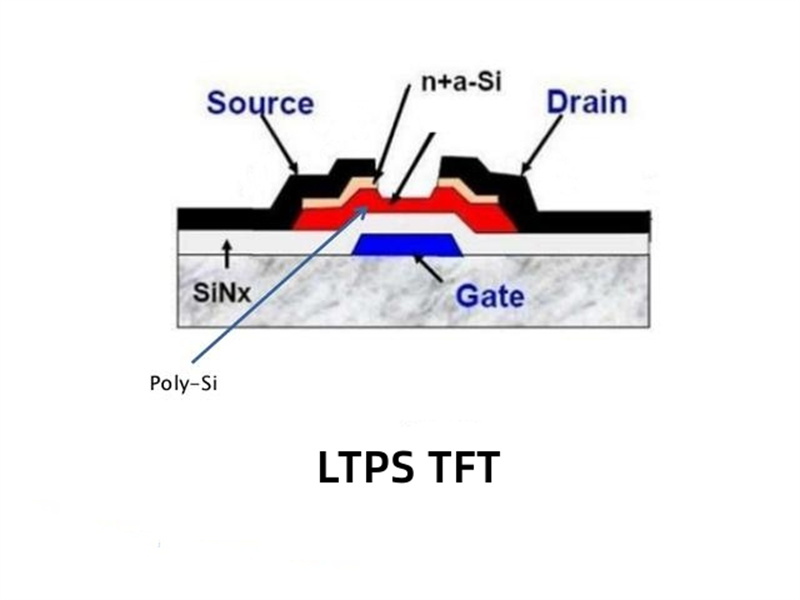
Overall, with the continuous development of technology and people's relentless pursuit of performance, LCD technology is constantly innovating and improving. The a-Si, IGZO, and LTPS technologies each have their own advantages and disadvantages, but they all play important roles in the LCD market, and may also be applied to a wider range of fields in the future.




